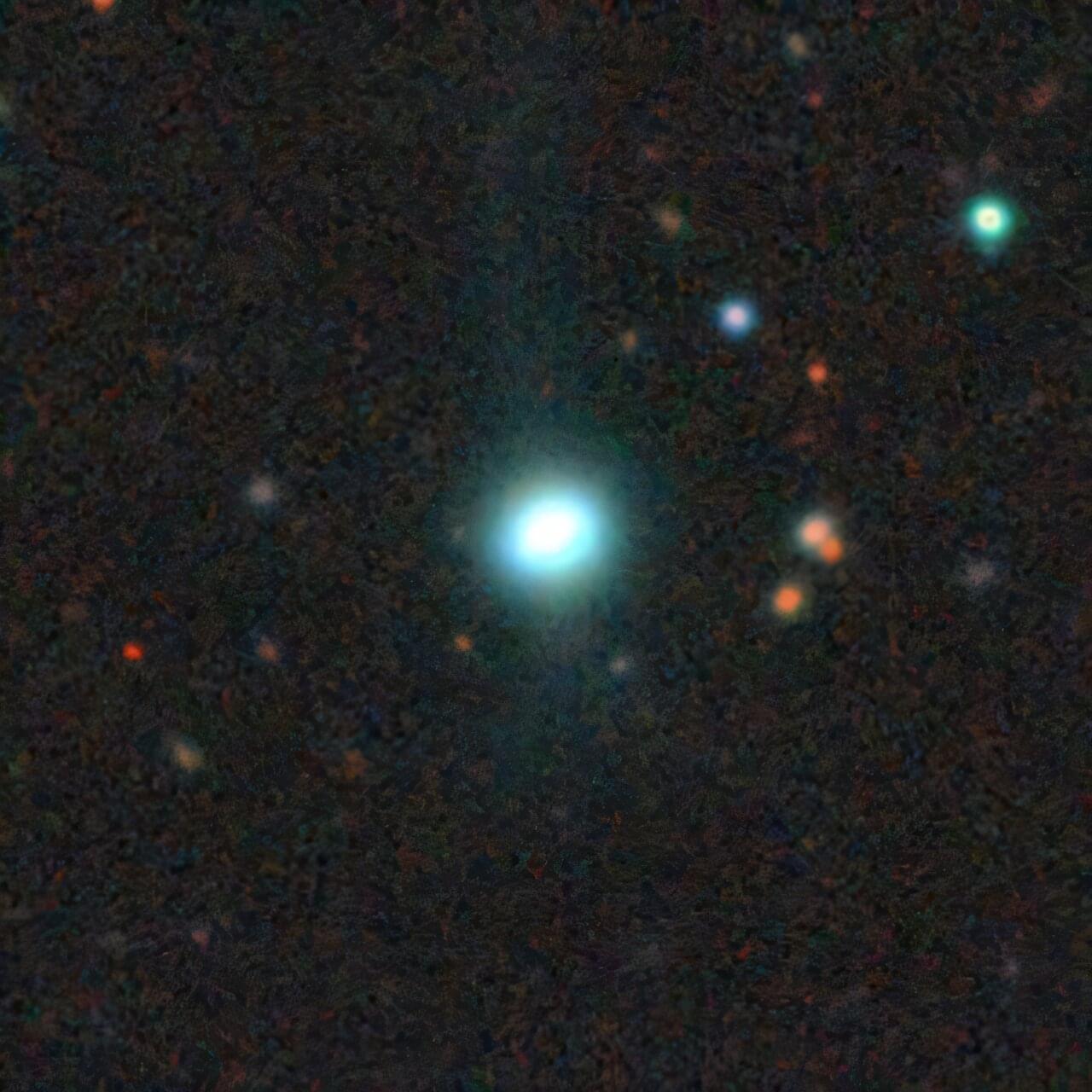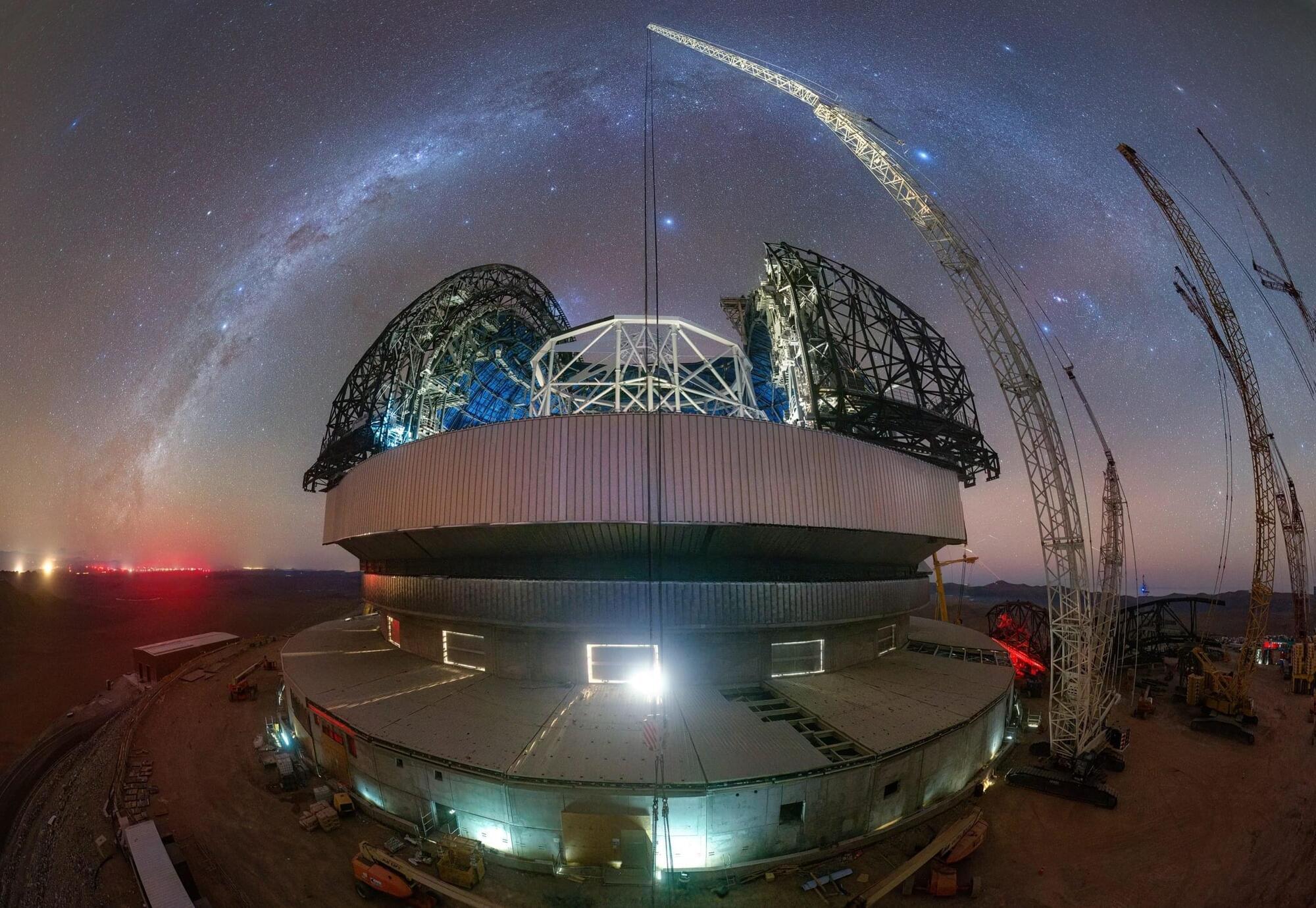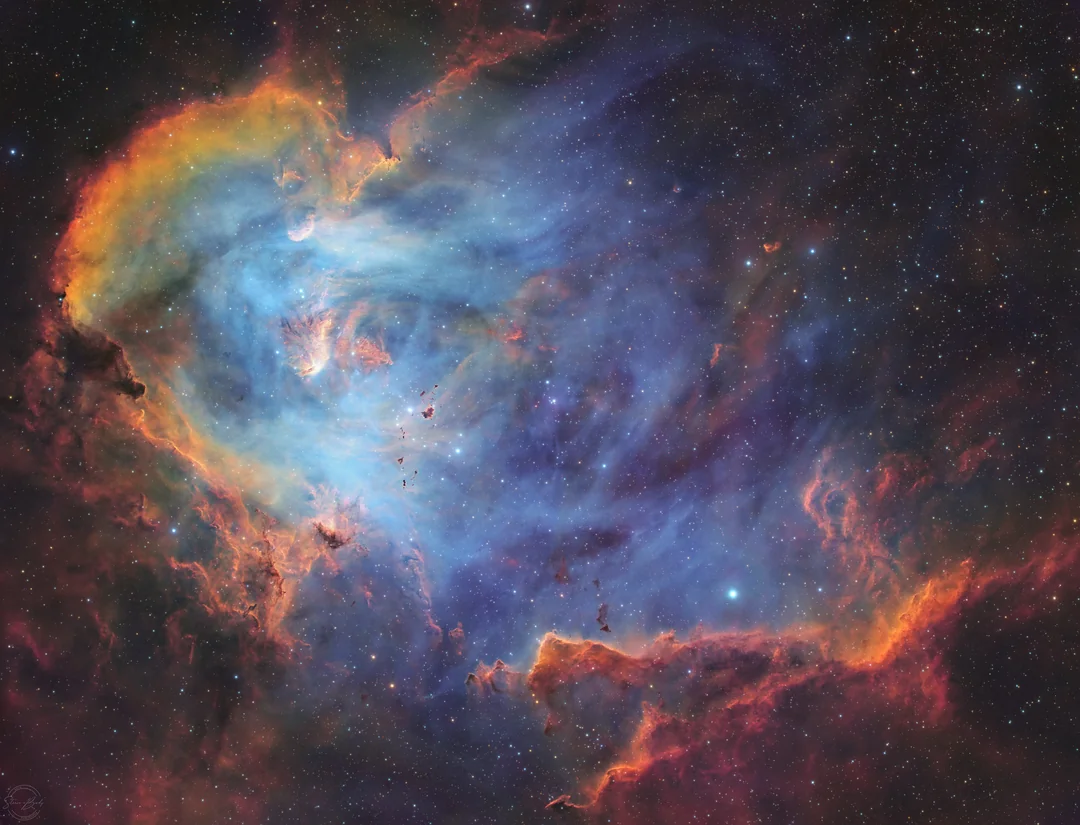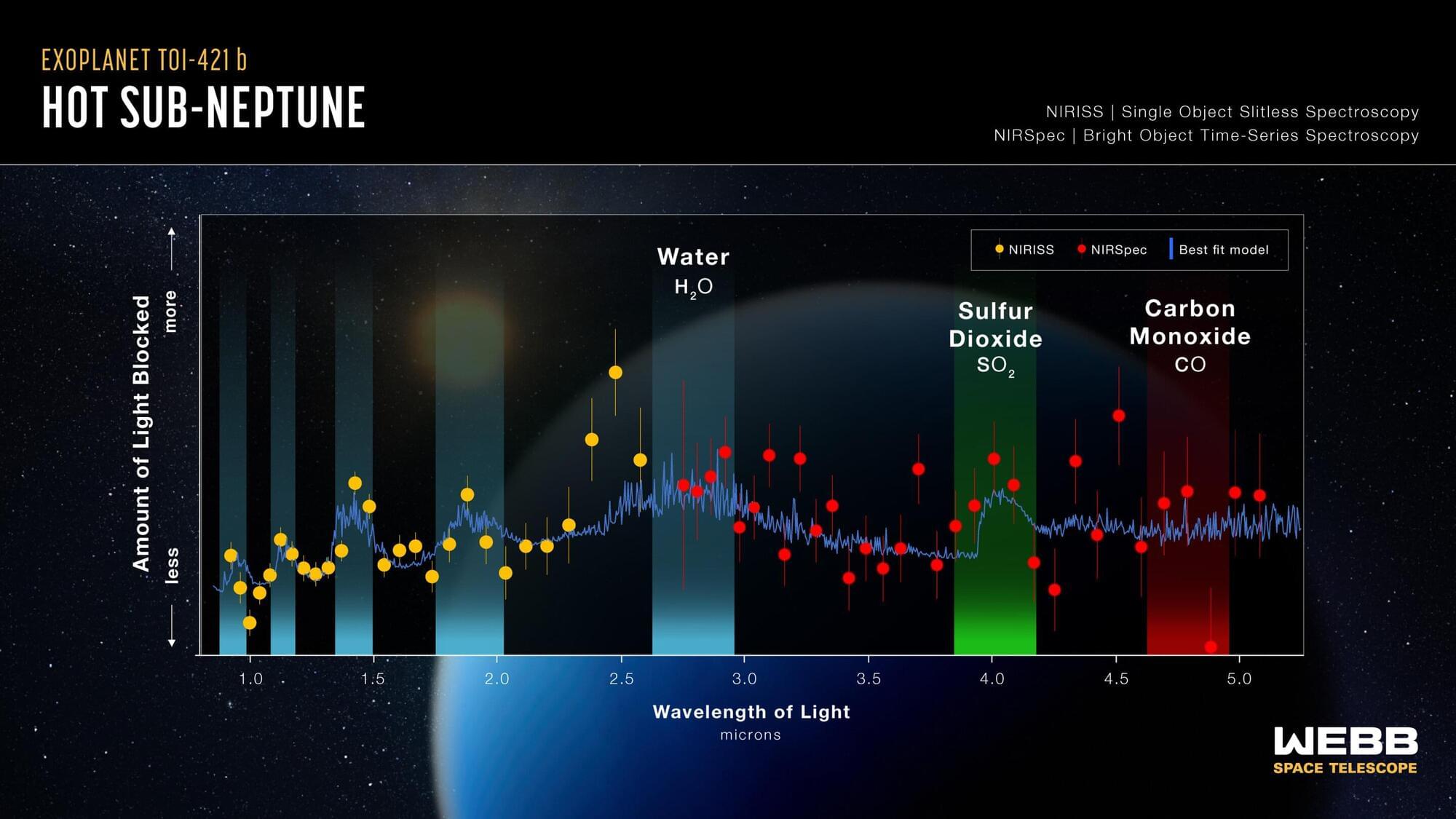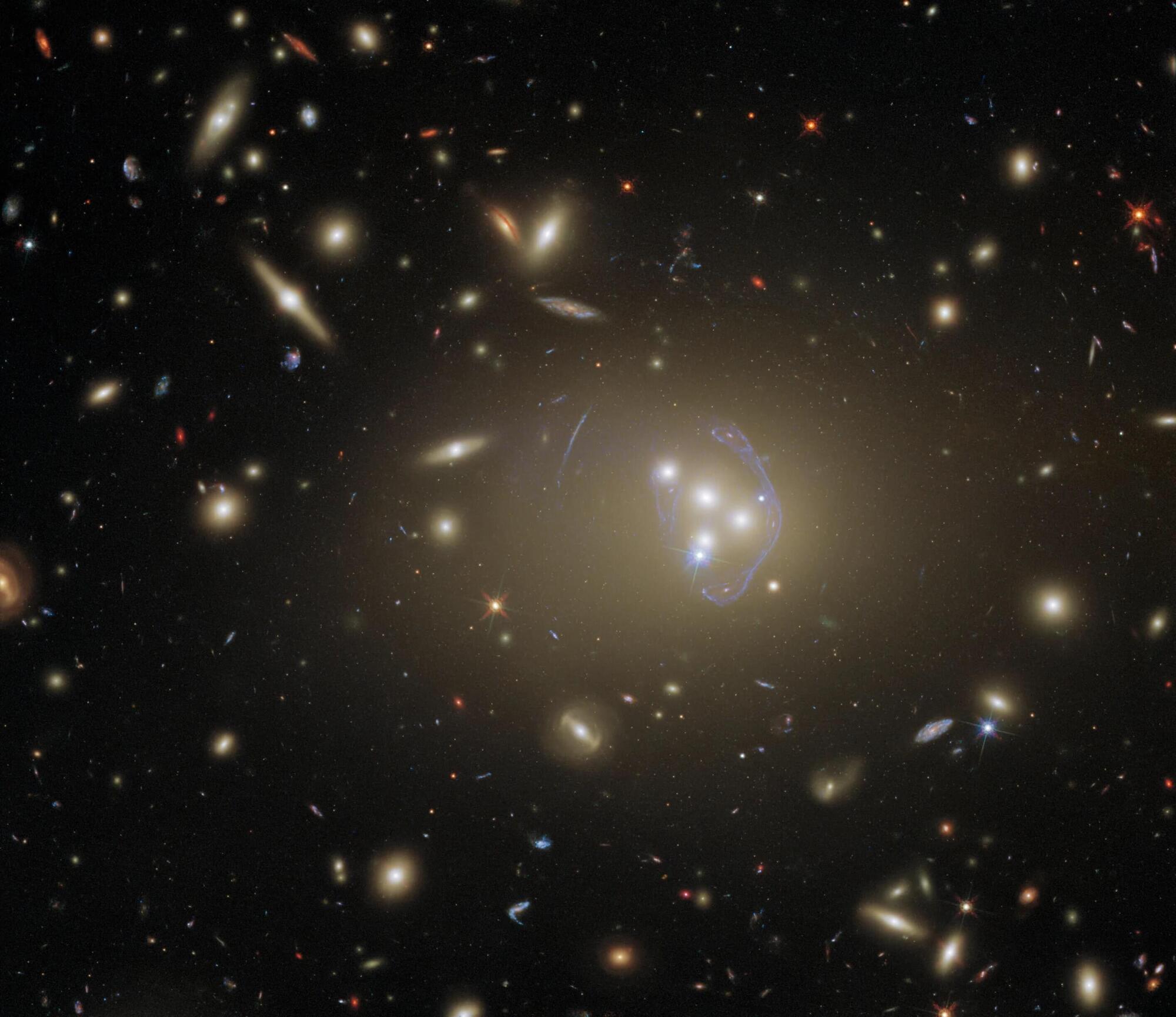Though they don’t orbit around our sun, sub-Neptunes are the most common type of exoplanet, or planet outside our solar system, that have been observed in our galaxy. These small, gassy planets are shrouded in mystery…and often, a lot of haze. Now, by observing exoplanet TOI-421 b, NASA’s James Webb Space Telescope is helping scientists understand sub-Neptunes in a way that was not possible prior to the telescope’s launch.
“I had been waiting my entire career for Webb so that we could meaningfully characterize the atmospheres of these smaller planets,” said principal investigator Eliza Kempton of the University of Maryland, College Park. “By studying their atmospheres, we’re getting a better understanding of how sub-Neptunes formed and evolved, and part of that is understanding why they don’t exist in our solar system.”
The findings are published in The Astrophysical Journal Letters.

